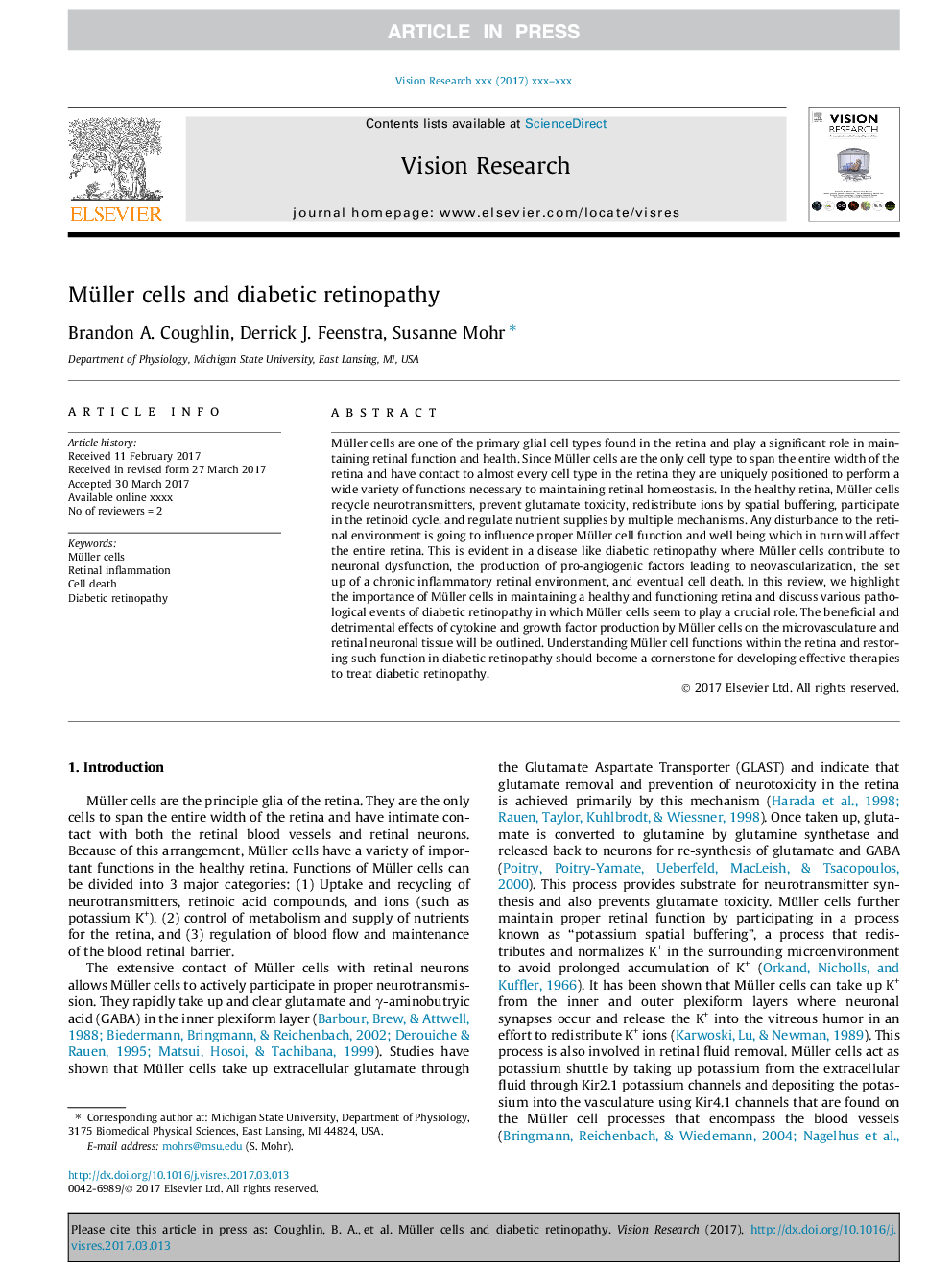| Article ID | Journal | Published Year | Pages | File Type |
|---|---|---|---|---|
| 8795385 | Vision Research | 2017 | 8 Pages |
Abstract
Müller cells are one of the primary glial cell types found in the retina and play a significant role in maintaining retinal function and health. Since Müller cells are the only cell type to span the entire width of the retina and have contact to almost every cell type in the retina they are uniquely positioned to perform a wide variety of functions necessary to maintaining retinal homeostasis. In the healthy retina, Müller cells recycle neurotransmitters, prevent glutamate toxicity, redistribute ions by spatial buffering, participate in the retinoid cycle, and regulate nutrient supplies by multiple mechanisms. Any disturbance to the retinal environment is going to influence proper Müller cell function and well being which in turn will affect the entire retina. This is evident in a disease like diabetic retinopathy where Müller cells contribute to neuronal dysfunction, the production of pro-angiogenic factors leading to neovascularization, the set up of a chronic inflammatory retinal environment, and eventual cell death. In this review, we highlight the importance of Müller cells in maintaining a healthy and functioning retina and discuss various pathological events of diabetic retinopathy in which Müller cells seem to play a crucial role. The beneficial and detrimental effects of cytokine and growth factor production by Müller cells on the microvasculature and retinal neuronal tissue will be outlined. Understanding Müller cell functions within the retina and restoring such function in diabetic retinopathy should become a cornerstone for developing effective therapies to treat diabetic retinopathy.
Related Topics
Life Sciences
Neuroscience
Sensory Systems
Authors
Brandon A. Coughlin, Derrick J. Feenstra, Susanne Mohr,
